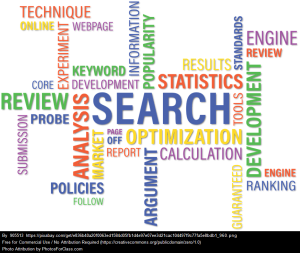Last updated on August 10th, 2022 at 10:55 am
Introduction
In SEO keywords are the key words and phrases in your web content that make it possible for people to find your site via search engines. Discovering which words and phrases your potential customers are using in search engines is known as keyword research.
Focusing on long-tail keywords is a great SEO tactic.

What are long tail keywords?
Keywords can be split into two main groups: short tail keywords (‘broad’ keywords) and long tail keywords (‘narrow’ keywords).
Long tail keywords usually consist of between three and five keyword phrases which are very specific to your niche.
Like normal keywords, you can use long tail keywords to define what is on your web page and how you want to be found in the search engine results pages.
As these long tail keywords are highly specific, they attract less traffic for the website, but the traffic you do get will tend to be higher quality traffic, so will hopefully lead to more conversions than normal keywords. A conversion is a goal or desired action that you want your website to produce.
If you are paying for an ad campaign then using long tail keywords can be cheaper, as there are less people trying to place bids on those keywords for pay per click ads.
A long tail keyword could be something like ‘pilates class East London’ while a short tail keyword is something like ‘pilates ’.
Long-tail keywords that address the need of the searcher or solve a definite problem are likely to rank well on Google.
How do you find long tail keywords
Sometimes people are searching for information – for example ‘search engine optimisation tips’. Other times they may want to buy – using search terms like ‘buy flat screen TV’. Words such as ‘purchase’ and ‘discount’ can be useful words to include if you are selling a product or service.
There are a number of free website tools that will generate suggested long tail keywords based on a short keyword such as ‘pilates’. Some of these tools, such as kwfinder.com, and Google Keyword Planner also show the average traffic that they estimate to be generated for each keyword phrase.
Using Google webmaster tools or Google analytics you can see what long tail keywords people have used to find your website. Ignore keywords that are irrelevant or too broad to define your product.

Next steps
Once you have identified long tail keyword phrases, it’s a good idea to use them in strategic places such as:
- In your page titles
- In ‘meta title’ tags
- In ‘meta description’ tags
- In image ‘ALT’ tags
- Used naturally in your content, especially in the first 100 words
- In heading tags like H1, H2
- In clickable ‘anchor text’ used to describe hyperlinks
- In your domain name if appropriate
Conclusion
It’s easier for a page to rank for a “long tail” keyword phrase, because it is more specific and therefore has less direct competition. However, the downside is that less people will search for it, so the potential number of visitors is far smaller.
I hope you found this article useful. Walker Websites is based in Highams Park, East London. Why not get in touch to see how we can help with your SEO needs? Call now – 0777 169 1194.


